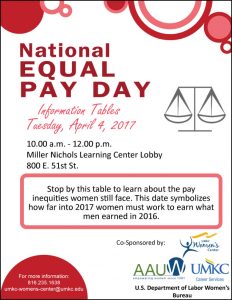by Thea Voutiritsas

The multiple ways to measure the gender pay gap can create a misconception that the data is unreliable. However, it is remarkably clear that no matter how the gap is measured, it certainly exists. The different types of gaps just answer different parts of the question. Age, ethnicity, education level, degree, and experience all factor in to a person’s earnings. Some may argue that women make “choices” that lead them to lower paying jobs, like their college major or becoming a mother. However, “choice” is an unverified assumption. Women often face barriers in entering male-dominated fields ranging from lack of information about job prospects to actual harassment and discrimination. Men and women also aren’t normally offered equal amounts of maternity and paternity leave. Therefore men and women are not able to share the responsibilities of childcare.
The bottom line is, the gender pay gap affects women across the board, though minorities fare much worse in the workplace. In 2015, even the lowest earning workers saw an 8% discrepancy between men’s and women’s wages. At the median income level, women’s hourly wages matched up to only 82.7 % of men’s. These figures are just one set of results found from the many studies done on the gender pay gap. Some studies may only look at hourly pay and exclude part-time workers. Some studies survey only certain demographics; and some studies factor in education level and experience, while others don’t.
April 4th represents how far into 2017 women must work to earn what men earned on average in 2016. Join is this Tuesday, April 4th from 10 a.m. – 12 p.m. in the Miller Nichols Learning Center Lobby, (800 E. 51st St.) to learn about the pay inequities women still face. Co-sponsored by the American Association of University Women Kansas City Branch, UMKC Career Services, and U.S. Department of Labor Women’s Bureau.